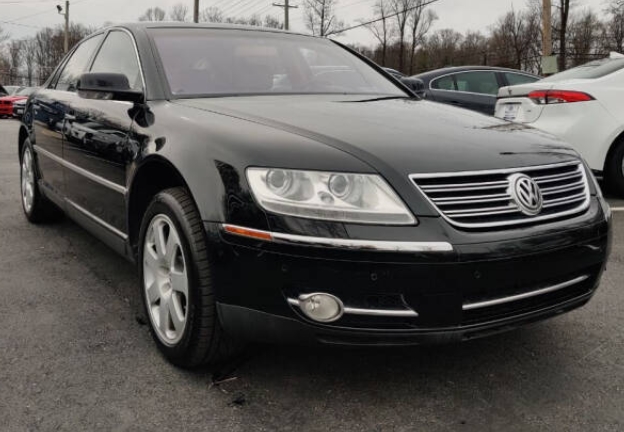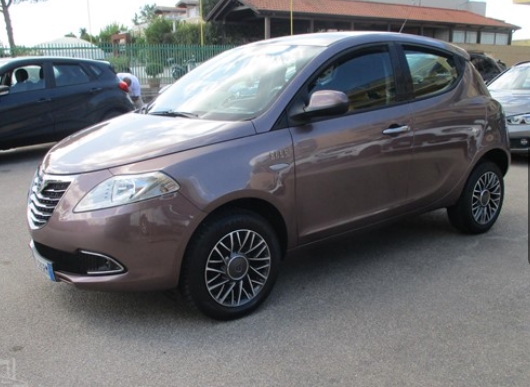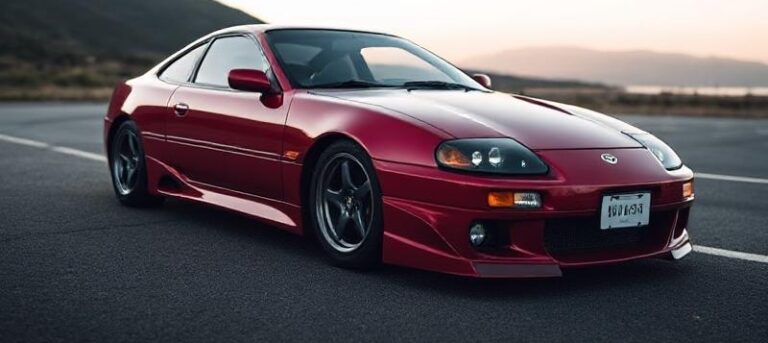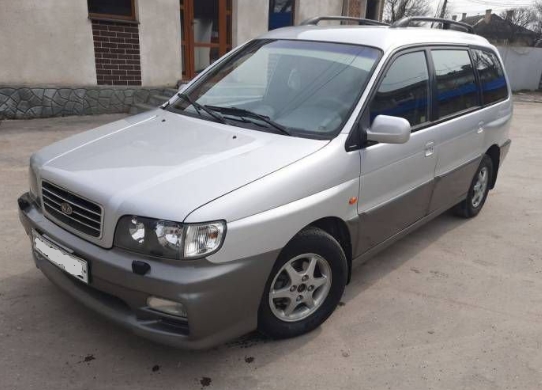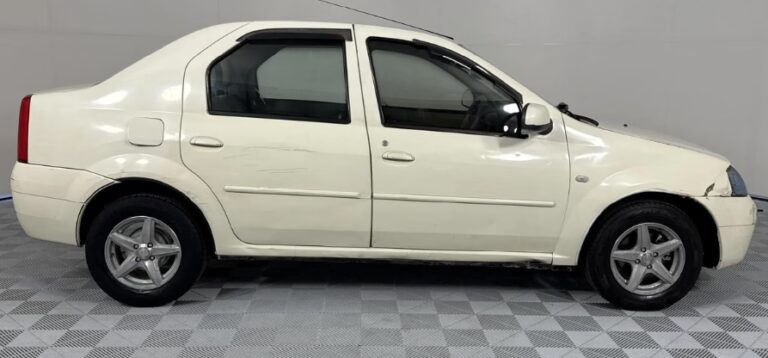The Volkswagen Phaeton Evolution: A Study in Uncompromising Ambition
In the annals of automotive history, few cars represent such a profound paradox as the Volkswagen Phaeton. It was, at once, an engineering masterpiece and a commercial enigma; a vehicle born from the “people’s car” brand that dared to challenge the long-established titans of the luxury world. The Phaeton was not merely a car; it was a statement, a testament to the singular, obsessive vision of one of the 20th century’s most formidable automotive executives, Ferdinand Piëch. Its story, spanning from its meticulous conception to its quiet departure, is a fascinating lesson in brand perception, engineering prowess, and the fine line between genius and folly. Produced from 2002 to 2016, the Phaeton’s evolution tells the tale of a car that was almost perfect, save for the badge on its grille.
The Genesis of an Obsession: Piëch’s Ten Commandments
To understand the Phaeton, one must first understand Ferdinand Piëch. The grandson of Ferdinand Porsche and the brilliant engineer behind the Porsche 917 and Audi’s Quattro system, Piëch was a leader driven by an relentless pursuit of technical superiority. As Chairman of the Volkswagen Group in the late 1990s, he sought to elevate every brand under his purview. Audi was already a credible threat to BMW and Mercedes-Benz, and with Bentley and Bugatti joining the fold, the group had a firm grip on the ultra-luxury and hypercar markets. Yet, Piëch wanted to prove that the core brand, Volkswagen itself, could produce the best car in the world.
This ambition crystallized into a set of now-legendary and almost impossibly demanding parameters for a new flagship sedan, codenamed “Project D1.” These informal “ten commandments” dictated the car’s non-negotiable attributes:
- It must be capable of being driven all day at 300 km/h (186 mph).
- This must be possible in an ambient temperature of 50°C (122°F).
- While doing so, the interior climate control must maintain a constant temperature of 22°C (72°F).
- The torsional rigidity of the bodyshell had to be a class-leading 37,000 Newton-metres per degree.
- The bonnet, doors, and boot lid were to be made of aluminium.
- It had to feature a revolutionary, draft-free, 4-zone Climatronic system.
- Every single design element, visible or not, had to be of the highest possible quality.
- The production facility itself had to be a work of art.
- Its platform must be robust enough to underpin a Bentley.
- It must surpass all conceivable competitors in comfort, quality, and technical specification.
To bring this vision to life, Volkswagen constructed the Gläserne Manufaktur (“Transparent Factory”) in the heart of Dresden, Germany. A stunning architectural achievement of glass and steel, this factory was more of a high-tech assembly atelier than a traditional production line. Workers in white coats meticulously assembled the Phaeton on gleaming Canadian maple parquet floors, a spectacle of quiet, handcrafted precision.
.
THIS is GOOD stuff if your car is in need:

.
The Initial Launch (2002–2006): A Full-Scale Assault
The production Volkswagen Phaeton debuted at the 2002 Geneva Motor Show, built on the robust D1 platform which it would share with the Bentley Continental GT and Flying Spur. From day one, the car was a technical tour de force, offered with a range of powerful engines and in two wheelbase lengths: standard (2881 mm) and long (3001 mm), which added 120 mm of rear legroom.
Unlike lesser VWs with distinct trim levels like S, SE, or SEL, the Phaeton’s hierarchy was defined primarily by its engine choice, with nearly all luxury features as standard and a vast options list for further personalization.
Engine Lineup (2002-2006):
- 3.2 Litre VR6: Serving as the entry point, primarily for the European market, this narrow-angle V6 produced 241 PS (238 hp). It was available with front-wheel drive or 4MOTION all-wheel drive and a 6-speed manual or 5/6-speed Tiptronic automatic. While smooth, it was tasked with moving a very heavy car.
- 4.2 Litre V8: Sourced from corporate sibling Audi, this proven 40-valve V8 engine delivered a more appropriate 335 PS (330 hp). It came standard with the 6-speed Tiptronic automatic and 4MOTION all-wheel drive, offering a blend of effortless power and refinement that suited the car’s character perfectly.
- 6.0 Litre W12: The halo engine and the heart of Piëch’s vision. This unique engine was essentially two VR6 engines mated together on a common crankshaft, resulting in a compact 12-cylinder powerhouse. It produced 420 PS (414 hp) and 550 Nm of torque, providing silent, relentless acceleration. It was paired exclusively with a 5-speed Tiptronic and 4MOTION.
- 5.0 Litre V10 TDI: Another of Piëch’s pet projects, this behemoth of a diesel engine was an engineering marvel. With two turbochargers, it produced 313 PS (309 hp) and a staggering 750 Nm (553 lb-ft) of torque. It gave the Phaeton the pulling power of a freight train and was, for a time, the most powerful passenger car diesel engine in the world. It was mated to a 6-speed Tiptronic and 4MOTION.
Inside, the Phaeton was a sanctuary of quality. Rich wood veneers, hand-stitched leather, and knurled metal switchgear abounded. The draft-free 4-zone Climatronic was a triumph, using hidden motorized vents that would emerge from the wood trim only when needed, preventing direct airflow on occupants. The standard air suspension with Continuous Damping Control (CDC) provided a ride quality that was exceptionally smooth and isolating.
Evolution and Refinement (2007–2010): Adapting to the Market
Despite its technical brilliance, the Phaeton struggled commercially, particularly in the United States, where it was withdrawn after the 2006 model year. The Volkswagen badge simply did not carry the cachet to command a price competitive with the Mercedes-Benz S-Class or BMW 7 Series.
In Europe and Asia, however, the car found a niche audience that appreciated its understated quality. Volkswagen continued to refine the formula.
Key Changes and Additions (2007-2010):
- First Facelift (2007): A subtle update introduced new features like LED daytime running lights, an updated DVD-based navigation system (RNS810), and new driver aids such as Side Assist (blind-spot monitoring) and a new cruise control system.
- Engine Evolution – The Rise of the V6 TDI: The most significant development in this period was the refinement of the more sensible diesel option. The 3.0 Litre V6 TDI, first introduced in 2004 with 225 PS, became the volume seller in Europe. Its output was progressively increased to 233 PS and then to 240 PS, offering an excellent balance of performance, refinement, and fuel economy. It became the default choice for most buyers.
- Engine Discontinuation: The mighty V10 TDI was phased out around 2007 due to its inability to meet new, stricter emissions standards. Similarly, the 3.2 VR6 was replaced in some markets by a more modern 3.6 Litre FSI VR6 producing around 280 PS. The W12 and V8 engines were also updated to improve emissions and efficiency, with the W12’s power eventually rising to 450 PS (444 hp).
The Second Major Facelift (2010–2016): A Modern Face on a Classic Form
For the 2011 model year, the Phaeton received its most significant visual update. The goal was to align the flagship with Volkswagen’s new, sharper design language, established by models like the Golf Mk6 and Passat B7.
- Exterior Changes: The front end was completely redesigned with a more horizontal chrome grille, new Bi-Xenon headlights with integrated LED running lights, and a new bumper. At the rear, new LED taillights with a distinctive M-shaped light signature were introduced. While it looked more modern and more “Volkswagen,” some argued it lost some of the original’s stately, anonymous character.
- Interior and Technology: The interior saw further technological enhancements. The infotainment system was upgraded to include Google Maps integration and an optional Dynaudio sound system. New assistance systems were added, including Dynamic Light Assist (camera-based main-beam control) and traffic sign recognition.
- Engine Updates: The engine lineup was rationalized. The 3.0 V6 TDI was updated again to produce 245 PS while meeting Euro 5 emissions standards. The a la carte petrol options remained the 3.6 V6 FSI, the 4.2 V8, and the top-tier 6.0 W12, though the V8 was gradually phased out in many markets, leaving the V6 TDI and W12 as the primary choices in the final years.
Despite the comprehensive updates, the fundamental character of the Phaeton remained unchanged. It was still the same over-engineered, supremely comfortable, and discreetly luxurious machine it had been in 2002. It continued to be offered in standard and long-wheelbase versions, with the opulent four-seat configuration (with a full-length rear center console) remaining a key option for its chauffeured client base.
The End of an Era and a Lasting Legacy
On March 18, 2016, the final Volkswagen Phaeton, a black W12 model, rolled silently off the line at the Transparent Factory in Dresden. After 14 years and just over 84,000 units produced, the plug was pulled. The factory was repurposed as a showcase for Volkswagen’s future in e-mobility.
The Phaeton was ultimately a magnificent failure in the marketplace, undone by the power of perception. Yet, its legacy is far richer than its sales figures suggest. It was a halo car that demonstrated, unequivocally, what Volkswagen was capable of. The engineering lessons learned, the standards of quality it set, and the sheer audacity of its existence had a ripple effect across the entire VW Group. The platform birthed Bentleys, and the technologies pioneered in the Phaeton trickled down to more accessible models for years to come.
Today, the Phaeton is a cult classic and a spectacular used-car bargain, offering S-Class levels of quality and comfort for the price of a mid-range hatchback. It remains a rolling tribute to Ferdinand Piëch’s uncompromising vision—a “people’s car” built for a king.
